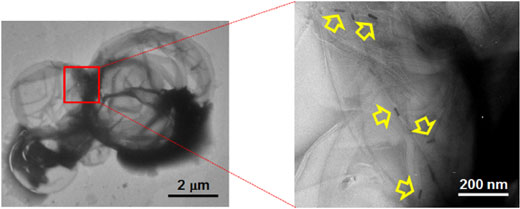| Posted: Dec 17, 2015 | |
Light-triggered local anesthesia |
|
| (Nanowerk Spotlight) Systemic pain medicine – which acts on the whole nervous system, rather than a specific area, to lessen pain – can have side effects such as nausea, drowsiness, or lack of concentration. | |
| Besides pain relief, numerous serious medical conditions require medications that cannot be taken orally, but must be dosed intermittently, on an as-needed basis, and over a long period of time. Controlled and long-term drug release has been recognized as one of the most promising biomedical technologies for certain types of chronic diseases. | |
| In order to avoid the inconvenience of repeated injections, remotely triggerable drug delivery systems have seen a lot of research interest. In these applications, a depot of drug is administered once, then repeatedly actuated via a safe external trigger such as an electrical impulse (read more: "Electrically triggered drug release from smart nanomembranes"), a magnetic field (read more: "Remote-controlled nanocomposite for on-demand drug delivery inside the body"), or near-infrared (NIR) light (see for instance: "Photo-triggered on demand drug release of nanoparticles"). | |
| In new work, researchers now have demonstrated a system that provides photo-triggered release of local anesthetics in a manner that could be adjusted by varying the dose and duration of irradiation. | |
| "We showed that gold nanoparticle-modified liposomes could be used to provide adjustable, on demand infiltration anesthesia," Changyou Zhan, a researcher in the laboratory of Daniel Kohane, tells Nanowerk. "After the initial numbness after injection wore off, irradiation of the site of injection with near-infrared light led to the return of local anesthesia, once daily over five days." | |
| Kohane, a Professor of Anaesthesia at Harvard Medical School and director of the Laboratory for Biomaterials and Drug Delivery at Boston Children’s Hospital, and his team have reported their findings in the December 14, 2015 online issue of Nano Letters ("Phototriggered Local Anesthesia"). | |
 |
|
| Transmission Electron Microscopy (TEM) image of liposomes conjugated with gold nanorods (yellow arrows in the right panel). (Image: Changyou Zhan, Harvard Medical School) | |
| "From a clinical point of view, this is important in that it demonstrates a method by which patients would be able to take control of relatively local pain, being able to deliver local analgesia on demand, for the duration and with the intensity desired," Kohane elaborates. "In the post-operative setting, technologies like these could make pain management easier for patients, and minimize the extent to which opioids and other systemic pain killers would have to be taken – and all their side effects." | |
| In order to to achieve repeated on-demand local anesthesia, the researchers chemically tethered gold nanorods – that are able to convert NIR light into heat – to liposomes containing tetrodotoxin and dexmedetomidine. | |
| The gold nanorods would raise the temperature of the adjacent liposomal lipid bilayer above its transition temperature, so that it would change from an ordered gel phase to a disordered liquid crystalline phase, and release analgesic compounds. | |
| The team tested the ability to provide repeated sensory blockade triggered by remote NIR irradiation in vivo in rats. | |
| "In theory, this sort of technology could be applicable to a range of excitable tissues – nerve, muscle, brain, heart, spinal cord," Kohane points out. "From the point of view of nanotechnology, it is an unusually clear demonstration of the ability of nanoscientifically-based triggering methods to induce local effects." | |
| Now, the challenge for the team is to make the formulations last longer and be triggerable at lower energies. The latter is important for increasing the depth in the body at which the particles can be triggered, and reducing the probability of tissue injury (burns) which could be caused by high irradiances and/or prolonged irradiation times. | |
| The scientists note that such devices could also be adapted to use in other excitable tissues, e.g., in the brain to prevent or treat seizures. | |
 By
Michael
Berger
– Michael is author of three books by the Royal Society of Chemistry:
Nano-Society: Pushing the Boundaries of Technology,
Nanotechnology: The Future is Tiny, and
Nanoengineering: The Skills and Tools Making Technology Invisible
Copyright ©
Nanowerk LLC
By
Michael
Berger
– Michael is author of three books by the Royal Society of Chemistry:
Nano-Society: Pushing the Boundaries of Technology,
Nanotechnology: The Future is Tiny, and
Nanoengineering: The Skills and Tools Making Technology Invisible
Copyright ©
Nanowerk LLC
|
|
|
Become a Spotlight guest author! Join our large and growing group of guest contributors. Have you just published a scientific paper or have other exciting developments to share with the nanotechnology community? Here is how to publish on nanowerk.com. |
|
